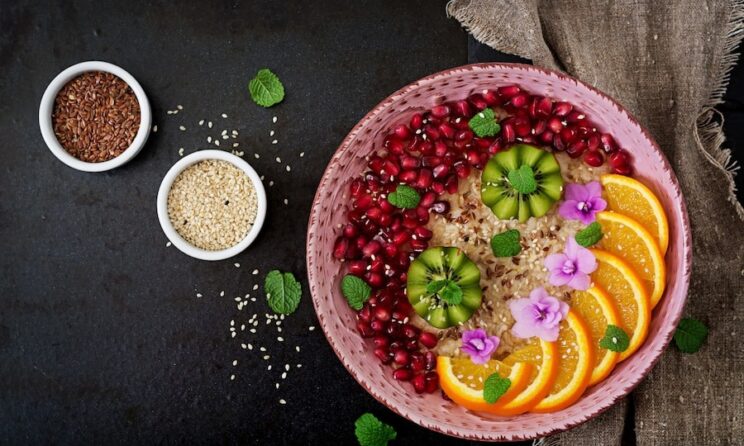
Maintaining a healthy lifestyle starts with exercise and a balanced diet. To have a balanced diet, one needs a good source of fibre along with other nutrients. A high fibre diet not only helps in managing weight but also supports digestion and overall health. Including high fibre recipes in your daily meal preparation can lead to significant long-term health benefits. By making simple yet impactful changes in your diet, you can pave the way for a healthier and more energetic life.
What is a High Fibre Diet?
Fibre is a plant-based nutrient essential for good digestion and overall well-being. A high fibre diet includes foods that are rich in soluble and insoluble fibre. Soluble fibre dissolves in water, forming a gel-like substance that helps control cholesterol and blood sugar levels. Insoluble fibre adds bulk to the stool, aiding regular bowel movements. Together, these types of fibre play a critical role in supporting a healthy digestive system.
Why Are High Fibre Recipes Important?
High fibre recipes provide several health benefits like better gut health and better digestion. They keep you full for longer periods, reducing the likelihood of overeating. This makes them a great tool for weight management. Moreover, fibre-rich foods help regulate blood sugar levels and lower cholesterol, reducing the risk of chronic diseases.
Top Foods to Include in High Fibre Recipes
Incorporating the right foods ensures that your recipes are rich in fibre and nutrition. Some excellent sources of dietary fibre include fruits like apples and bananas, vegetables such as broccoli and carrots, and whole grains like oats and quinoa. Legumes, including lentils and chickpeas, are another fantastic option. Nuts and seeds, such as almonds and chia seeds, not only add crunch but also boost the nutrition quotient.
How to Incorporate High Fibre Recipes into Your Diet
Adding more fibre to your diet is easier than you might think with a little planning. Start your breakfast with oatmeal topped with fruits and seeds, which are both delicious and packed with fibre. For lunch, consider a whole-grain sandwich filled with fresh vegetables or a quinoa salad loaded with greens and legumes. Dinner can include fibre-rich options like lentil soup, roasted vegetables, or a whole-grain stir-fry. Healthy snacks, such as carrot sticks with hummus or a handful of nuts, are also excellent ways to boost your daily fibre intake.
Tips for Adopting a High Fibre Diet
Adapting to a high fibre diet can be done smoothly by following a few tips. Introduce fibre gradually to avoid digestive discomfort. Pair fibre-rich foods with plenty of water, as fibre absorbs water to aid digestion. Read food labels carefully to identify high-fibre options and plan your meals accordingly. Consistency is key to reaping the full benefits of fibre in your diet.
Conclusion
Embracing a high fibre diet through easy and delicious high fibre recipes is an effective way to manage weight and promote health. Fibre-rich meals help control hunger, improve digestion, and reduce the risk of chronic conditions. By making fibre a regular part of your meals, you can take a simple yet impactful step towards better health and well-being. Start small, stay consistent, and enjoy the long-lasting benefits of a healthy lifestyle.






